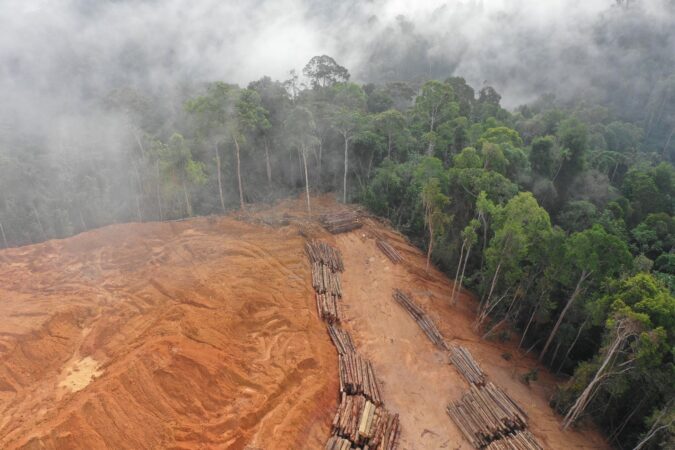Biodiversity, the variety of life on Earth, is crucial for the stability and health of ecosystems. It provides essential services such as pollination, nutrient cycling, and climate regulation, which are vital for human survival and well-being. However, biodiversity is under unprecedented threat from human activities. Understanding and addressing these threats is essential in order to preserve the intricate web of life that sustains us. Stephen Wentzel of Zimbabwe explores the main threats to biodiversity and discusses effective strategies to mitigate these challenges.
Habitat Loss
Habitat loss is the leading cause of biodiversity decline. It occurs when natural habitats are converted for agriculture, urban development, or infrastructure projects. As forests, wetlands, and grasslands are cleared, countless species lose their homes and resources, leading to population declines and extinctions. Tropical rainforests, which host a significant portion of the world’s biodiversity, are particularly vulnerable. The Amazon rainforest, for instance, is now rapidly shrinking due to logging, mining, and agricultural expansion.
Mitigation Strategies:
- Protected Areas: Establishing and effectively managing protected areas can safeguard critical habitats. National parks, wildlife reserves, and marine protected areas are essential tools in conserving biodiversity.
- Sustainable Land Use Practices: Promoting sustainable agriculture, forestry, and urban planning can reduce habitat destruction. Agroforestry, organic farming, and urban green spaces can coexist with biodiversity conservation.
- Restoration Projects: Initiating habitat restoration projects, such as reforestation and wetland rehabilitation, can help restore degraded ecosystems and reconnect fragmented habitats.
Deforestation
Closely linked to habitat loss, deforestation specifically refers to the clearing of forests, which are home to over 80% of terrestrial species. The demand for timber, paper, and agricultural land drives deforestation, especially in tropical regions. This not only destroys habitats, but also disrupts local climate patterns, affects water cycles, and contributes to global warming by releasing stored carbon dioxide.
Mitigation Strategies:
- Forest Conservation Policies: Implementing strict regulations and policies to protect forests from illegal logging and land conversion is crucial. Governments and international organizations must enforce these policies.
- Sustainable Forestry: Promoting sustainable forestry practices, such as selective logging and certification schemes like the Forest Stewardship Council (FSC), can reduce the impact on forest ecosystems.
- Economic Incentives: Providing economic incentives for forest conservation, such as payments for ecosystem services (PES) and REDD+ (Reducing Emissions from Deforestation and Forest Degradation), can motivate landowners and communities to help preserve forests.
Climate Change
Climate change poses a significant threat to biodiversity by altering temperature and precipitation patterns, sea levels, and the frequency of extreme weather events. Species that cannot adapt or migrate to suitable habitats face increased risks of extinction. Coral reefs, Arctic ecosystems, and alpine regions are among the most affected.
Mitigation Strategies:
- Emission Reductions: Reducing greenhouse gas emissions through renewable energy, energy efficiency, and sustainable transportation is critical for mitigating climate change.
- Climate-Resilient Ecosystems: Enhancing the resilience of ecosystems to climate change through conservation and restoration efforts can help species adapt. This includes creating wildlife corridors and protecting climate refugia.
- Adaptive Management: Implementing adaptive management strategies that monitor and respond to changing environmental conditions can help to conserve biodiversity in a changing climate.
Pollution
Pollution, in various forms, adversely affects biodiversity. Chemical pollutants, such as pesticides and heavy metals, contaminate the soil, water, and air, directly harming countless plants and animals. Plastic pollution in oceans entangles marine life and disrupts food chains. Eutrophication from agricultural runoff leads to dead zones in aquatic ecosystems.
Mitigation Strategies:
- Regulation and Enforcement: Enforcing regulations to control pollution from industrial, agricultural, and urban sources is essential. This includes stringent controls on chemical use and waste disposal.
- Pollution Prevention: Promoting pollution prevention measures, such as reducing plastic use, using eco-friendly products, and adopting cleaner production technologies, can minimize environmental contamination.
- Cleanup Initiatives: Supporting cleanup initiatives, such as ocean cleanups and soil remediation projects, can help restore polluted ecosystems and protect biodiversity.
Invasive Species
Invasive species are non-native organisms that outcompete, prey on, or otherwise harm native species and ecosystems. They can cause significant ecological and economic damage. For example, the introduction of the brown tree snake in Guam led to the decline of native bird populations, and invasive plants like kudzu in the southeastern United States outcompete native vegetation.
Mitigation Strategies:
- Early Detection and Rapid Response: Establishing early detection and rapid response systems to identify and manage invasive species before they become established can prevent widespread impacts.
- Biosecurity Measures: Implementing strict biosecurity measures to prevent the introduction and spread of invasive species through trade, travel, and transport is crucial.
- Restoration and Management: Managing invasive species through mechanical, chemical, and biological control methods, and restoring native ecosystems can mitigate their impact.
Addressing the threats to biodiversity requires a comprehensive and coordinated approach that necessitates the help of governments, businesses, communities, and individuals. Protecting habitats, reducing deforestation, mitigating climate change, controlling pollution, and managing invasive species are all critical components of a successful biodiversity conservation strategy. By implementing these strategies and fostering global cooperation, we can ensure that the rich tapestry of life on Earth continues to thrive for future generations.
